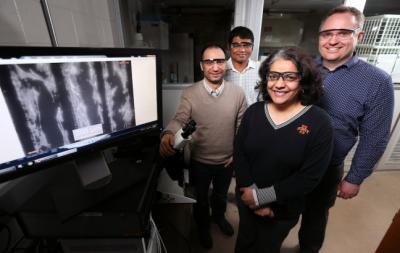Researchers at Iowa State University (ISU) are developing a graphene-based method to transform stem cells into Schwann-like cells (cells of great importance for various nerve regeneration efforts). If successful, this process has potential to replace the complicated and expensive process used today.

The team's method uses inkjet printers to print multi-layer graphene circuits and also uses lasers to treat and improve the surface structure and conductivity of those circuits. It turns out that mesenchymal stem cells adhere and grow well on the treated circuit’s rough 3D nanostructures. With the addition of small doses of electricity 100 millivolts for 10 minutes per day over 15 days the stem cells become Schwann-like cells.
The electrical stimulation is reportedly very effective, differentiating 85% of the stem cells into Schwann-like cells compared to 75% by the standard chemical process. The electrically differentiated cells also produced 80 nanograms per milliliter of nerve growth factor compared to 55 nanograms per milliliter for the chemically treated cells.
The researchers state that the results could change how nerve injuries are treated inside the body: these results help pave the way for in vivo peripheral nerve regeneration where the flexible graphene electrodes could conform to the injury site and provide intimate electrical stimulation for nerve cell regrowth the researchers wrote in a summary of their findings.
A key element in the process is a graphene inkjet printing technique developed by ISU. However, once graphene electronic circuits were printed, they had to be treated to improve electrical conductivity, which usually means high temperatures or chemicals. Either could damage flexible printing surfaces including plastic films or paper. This problem was solved by developing computer-controlled laser technology that selectively irradiates inkjet-printed graphene oxide. The treatment removes ink binders and reduces graphene oxide to graphene physically stitching together millions of tiny graphene flakes. The process makes electrical conductivity more than a thousand times better.
According to the researchers, the technology could one day be used to create dissolvable or absorbable nerve regeneration materials that could be surgically placed in a person’s body and wouldn’t require a second surgery to remove.

